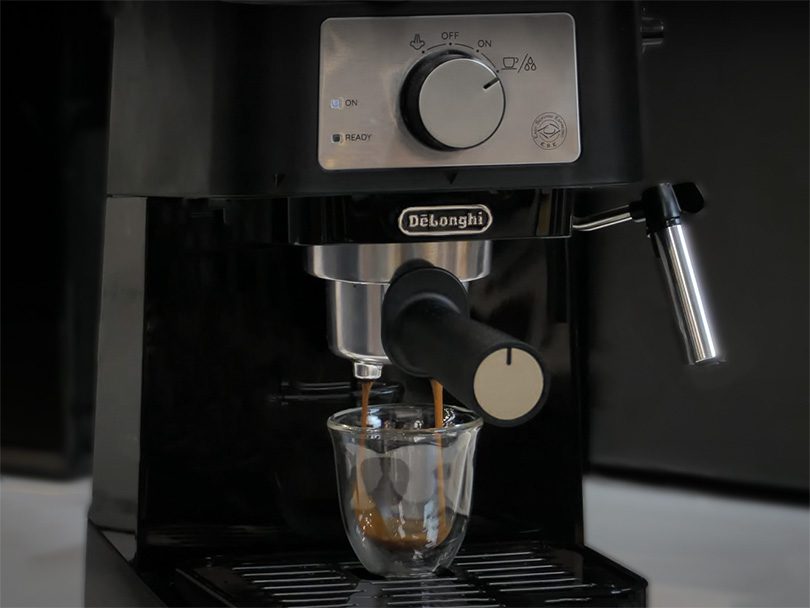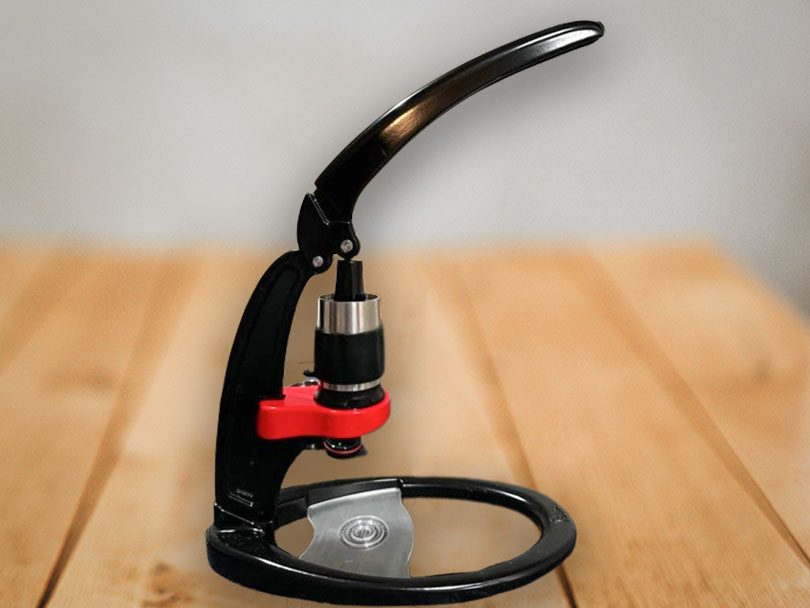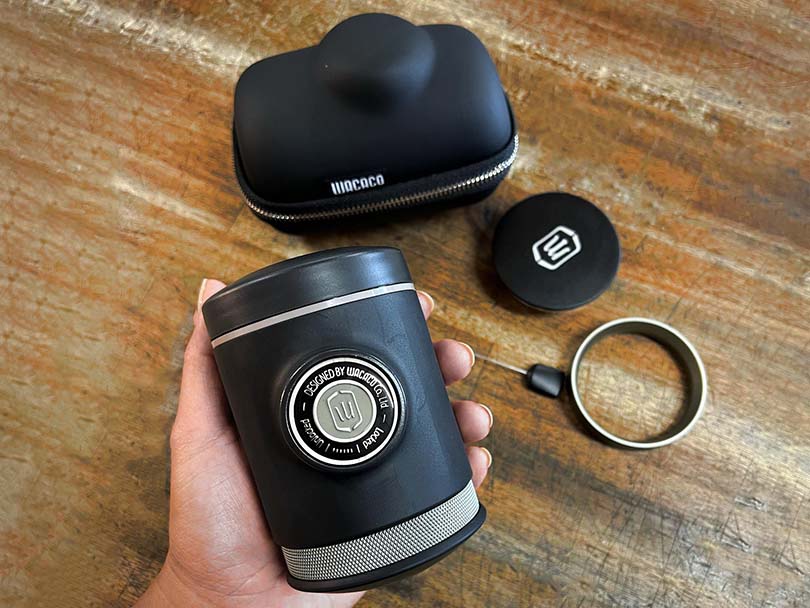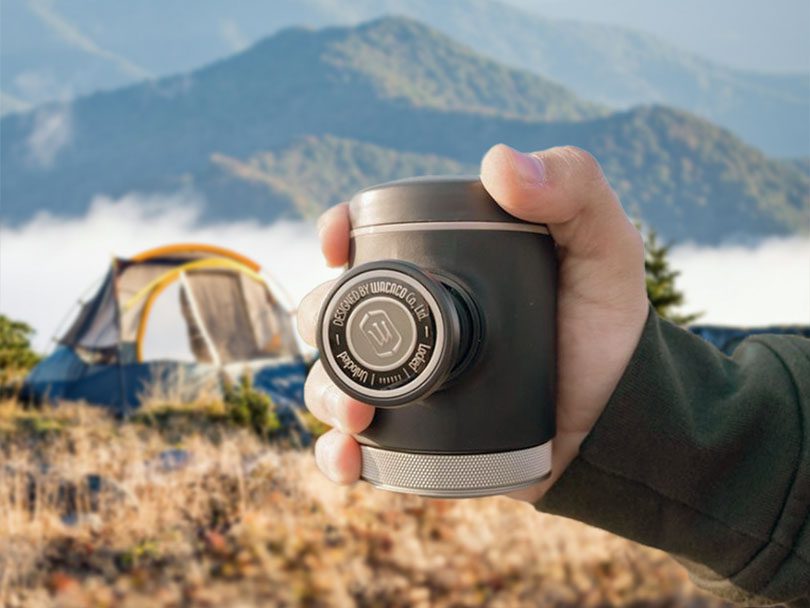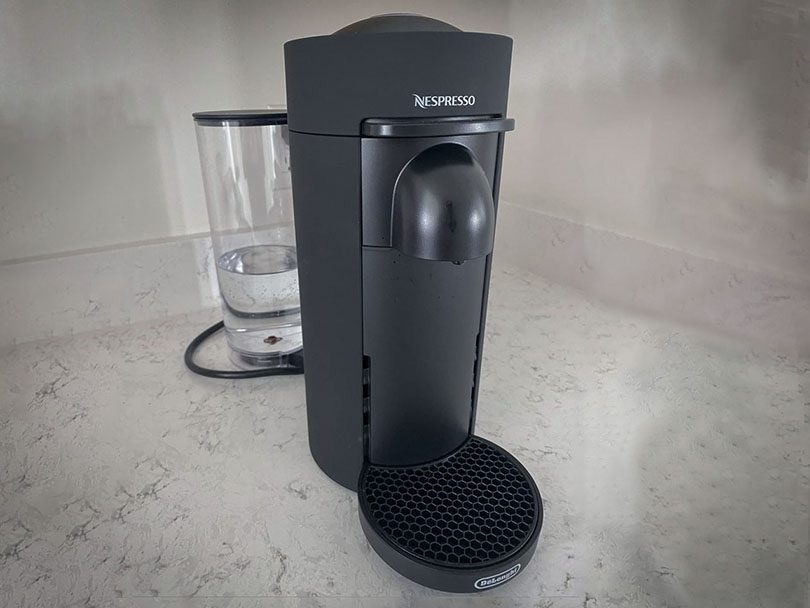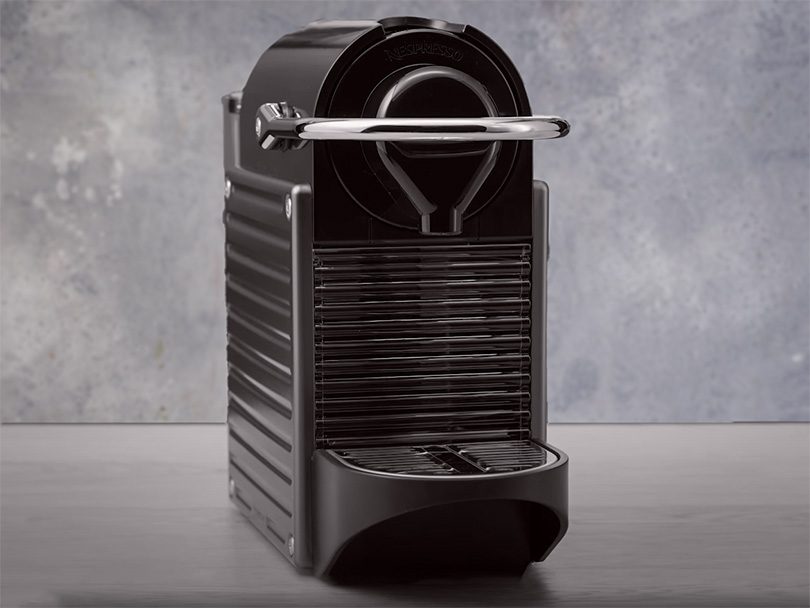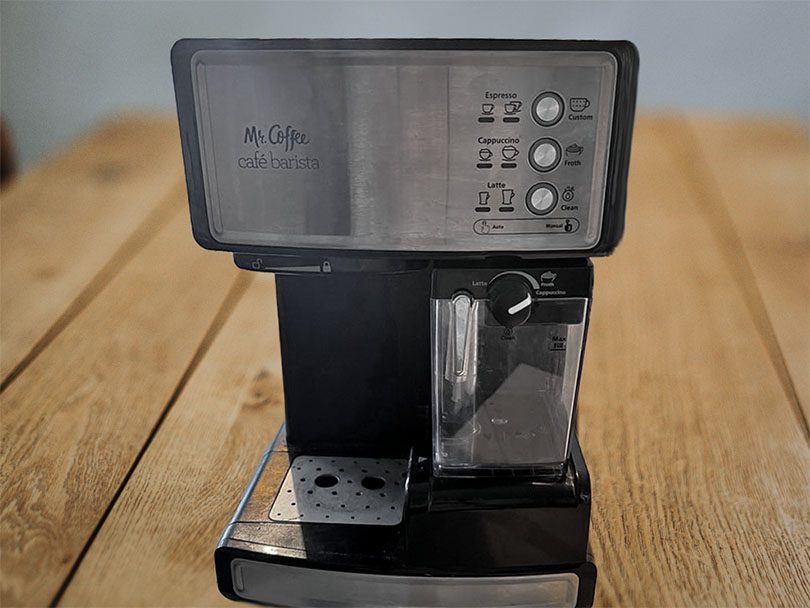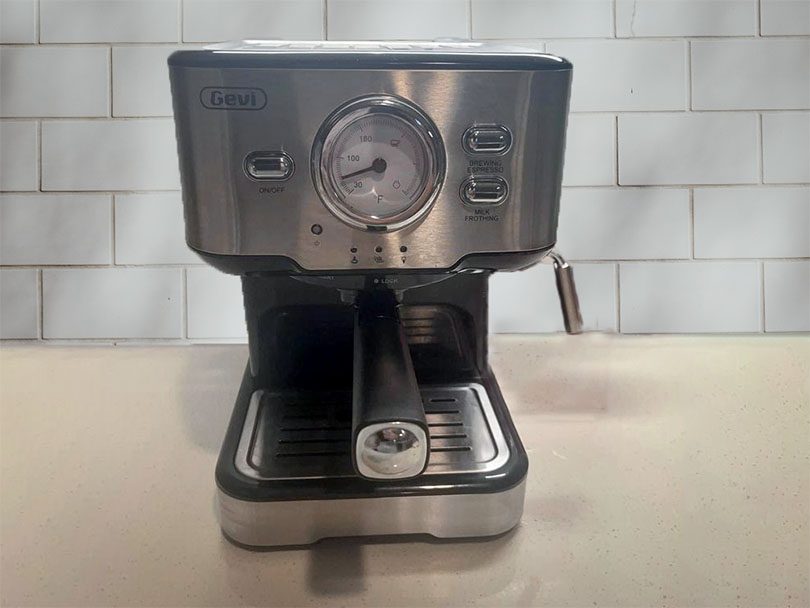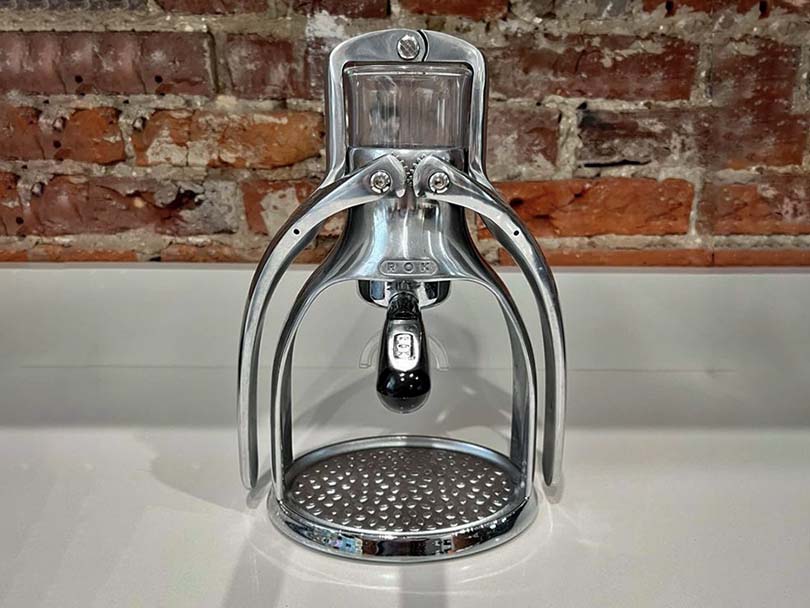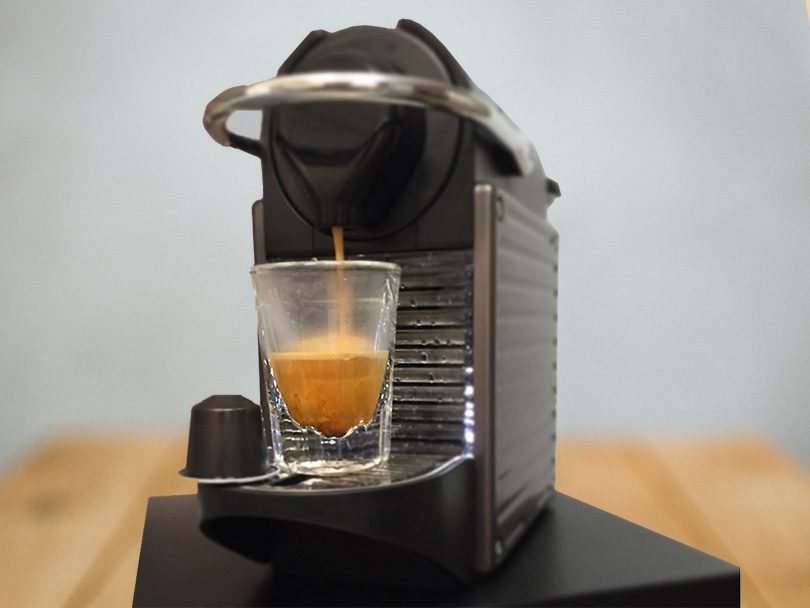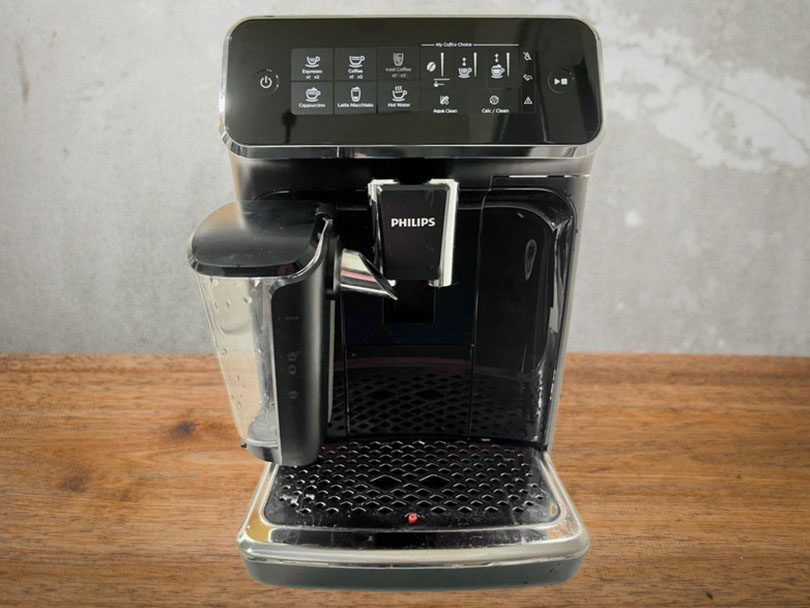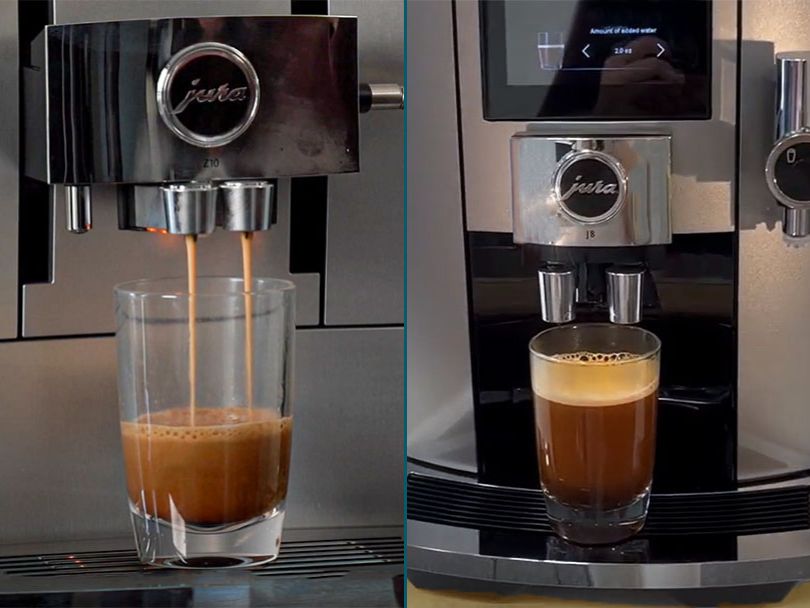Great espresso is one of the best things about the morning. The smell of that rich, full-bodied, caffeine hit pulling you into the day. But if you want that great flavor without breaking the bank, you’ll need one of the best espresso machines under $200.
Whether you’re just starting on your home espresso-making journey or you’re a seasoned pro shopping on a budget, there are plenty of affordable options that deliver good results. Options like the DeLonghi Stilosa (our top pick) or the Wacaco Picopresso (best portable option). It’s very possible to enjoy your favorite coffee at home without splashing out thousands or selling a kidney.
To help you find the perfect machine, we have done the hard work of searching and testing for you. Based on that research, the following are our favorite espresso makers for less than $200. All you have to do is pick one!
This article may contain affiliate/ compensated links. As an Amazon Associate, we earn from qualifying purchases at no additional cost to you. For more information please see our disclaimer here.
Best Overall: DeLonghi Stilosa
Espresso Quality: 7/10
Ease of Use: 8/10
Value for Money: 9/10
Overall Rating: 8/10
Best Quality: Flair Classic
Espresso Quality: 10/10
Ease of Use: 5/10
Value for Money: 8.5/10
Overall Rating: 8/10
Or read our full review
Best Portable: Wacaco Picopresso
Espresso Quality: 9/10
Ease of Use: 9/10
Value for Money: 10/10
Overall Rating: 9/10
Or read our full review
1. De’Longhi Stilosa – Overall Best Espresso Machine Under $200
Pros
- Single or double portafilters
- Milk wand is easy to use
- Excellent value for money
- Good for beginners
- Small footprint
- Good build quality
- Can use ESE pods or ground coffee
Cons
- Not the greatest to look at
- Milk wand can’t produce professional microfoam
- Best suited to occasional/ casual espresso drinkers
If you’re looking for a budget-friendly, compact espresso maker, you can’t go far wrong with the De’Longhi Stilosa:
Not only is it one of the best espresso machines for under $200, but you can regularly pick it up on sale for less than $100 too!
Having been around the block a few times since their inception in 1902, DeLonghi makes machines built to last. Their designs, across their range, are tried and tested so you know you’re getting quality.
Now, that’s not to say it’s perfect – the Stilosa does have its limitations. However, it’s a very good espresso machine considering the price tag. It not only allows you to pull good espresso, but you can also foam milk to a good (not great) standard with the powerful steam wand.
After putting it through its paces, I’m confident in recommending this machine to any budding home barista. But if you’re looking for a machine to work on dialing in your shots, or for heavy use, this probably isn’t the one for you.
The pressurized baskets are good for beginners and are forgiving of pre-ground coffee or even ESE pods. No, it’s not going to blow anyone away but the blend of quality, ease, convenience, and durability means there’s really nothing better between $100 and $200. It’s an excellent well-rounded espresso maker.
2. Wacaco Picopresso – Best Portable Espresso Maker Under $200
Pros
- Potential for incredible tasting coffee
- Super lightweight – weighs just 0.77 lb (350g)
- 18g max dose
- 18 bar pressure
- Easy to clean
- Hard case included
- Durable
Cons
- Takes practice to perfect
- Need to boil water separately
- Time-consuming to use
- Need to manually pump to build pressure
- Ideally need a quality grinder and scale
- Must pre-heat
Wacaco absolutely knocks it out of the park with the Picopresso. For us, it is the best portable espresso maker around. You could (and we will!) argue that the Picopresso produces the best espresso shots of any of the espresso machines on this list.
Just as long as you’re willing to work for it.
Palm-sized, great value, great espresso, what’s the catch?
You really need a high-quality grinder to get the best from the Picopresso and ideally a scale too. There’s no safety net, unlike the also excellent Nanopresso (see below), so be prepared to have to practice quite a lot to get those amazing shots.
If you’re using it at home, you can buy a nice stand for it. Or chuck it in your bag for hiking, camping, or even business trips – it’s the first thing I pack whenever I go away.
If you’re willing to put in some effort and invest in a grinder, the Picopresso can hugely outperform its price.
3. Flair Classic – Best for Espresso Enthusiasts
Pros
- 18g max dose
- Potential for barista-quality espresso
- Complete control
- Easy to clean
- Portable
- Looks great
- No electricity needed
Cons
- Steep learning curve
- Bulky (compared to other portable models)
- Need a full setup including scale & high-quality grinder
- Lots of small parts
If you’re a committed home barista looking to take your skills to the next level, a Flair espresso maker is an incredible option. And the Classic model is great at this price range.
Being a manual espresso maker, it will take time, focus, and practice to get the phenomenal quality espresso shots that it’s capable of pulling. So if you’re not willing to put in the effort, this isn’t the one for you.
We also recommend saving your favorite espresso beans until you’ve nailed your technique as you’ll likely end up throwing a few shots down the sink. I certainly did and I’ve been in this game a long time.
It comes with a hard carry case which is useful. But, realistically, you’re not going to be traveling with it all that much with it as it’s a lot bulkier than something like the Picopresso.
That said, it looks really cool and can make much better espresso.
To get that great quality espresso, you really need to invest in a full setup. A high-quality grinder is non-negotiable (we love our J Ultra for this – see why, here.). But we also recommend an accurate scale and getting the add-on pressure kit. Whilst the kit does push the price just over $200, it makes the Flair significantly easier to use.
4. Nespresso Vertuo Plus – Best Pod Machine Under $200
Pros
- Rich, full-bodied coffee with thick crema
- Incredibly easy to use
- Excellent build quality
- Large selection of pods available
- Reliable
- Quiet (great for office use too)
- Compact
- Big water reservoir
- Easy to clean
Cons
- Vertuo capsules are more expensive than Original capsules
- Tied to Vertuo capsules
- Can’t pour hot water
- No milk frother
- Pods aren’t easy to recycle
- Attracts dust
- Not as good as fresh ground coffee
The Vertuo range from Nespresso uses special centrifusion extraction technology to get the best out of the Vertuo capsules. This process spins the capsules at a rate of 7,000 times per minute which produces a full-bodied espresso and fantastic crema.
And, it’s not just a gimmick – I was so impressed by how much it really works.
Using the Nespresso Vertuo Plus will bring you amazingly consistent coffees, no matter how many times in a row you run the machine. Or how tired you are.
No, it won’t be better than an expert barista using fresh ground beans. But that doesn’t mean it isn’t very enjoyable coffee.
You do have to be happy with buying into the Nespresso model of using branded everything. But, if you’re happy with this, then it’s a superb single-serve espresso machine that makes very impressive coffees in the least complicated way imaginable.
Whilst the Nespresso VertuoPlus is on the budget end of the spectrum in terms of upfront cost, it’s certainly not the cheapest espresso machine to run. Buying those Vertuo capsules soon adds up – and you can’t use any other type of pod or capsule.
5. Wacaco Nanopresso
Pros
- Great tasting coffee
- Portable – weighs just 0.74 lb
- Budget-friendly
- Can make cold espresso
- Massive 18 bar pressure
- Built-in espresso cup
- Easy to use and clean
- Carry bag included (hard case available separately)
- Nespresso Pod adapter (not included)
- Durable
Cons
- Requires focus
- Need to boil water separately
- Allan wrench needed for deep-cleaning
- Difficult to clean if traveling
- Time-consuming to produce more than one shot of espresso
- Need to manually pump to build pressure
If the Picopresso sounds amazing but a little too much like hard work, then the Nanopresso is for you.
The use of a pressurized filter basket means there is a lot more margin for error than the Picopresso. You can use pre-ground coffee and still get a decent shot. Or you can buy the NS adapter if you prefer using Nespresso pods – they can make life a lot easier when on the road.
To get the best out of this device, we recommend buying it in a bundle with a protective carrying case to keep it safe on the road. Plus, the Barista Kit as the combination creates the dream team for getting the best espresso on the go.
Whilst this is an extra expense, the full kit still comes in well under $200 so you are still getting a top, cheap espresso maker.
This pocket-sized machine should be seriously considered by anyone who loves espresso. Not just great on the road, you can also use it at home and then pop it in the cupboard, saving precious counter space.
6. Nespresso Pixie
Pros
- Good tasting coffee
- Quick
- Small & compact, perfect for apartment or office
- Lidded water tank
- Well made
- Wide range of capsules
- Eco-friendly: recyclable Nespresso pods & energy efficient operation
Cons
- Only works with Nespresso capsules
- Can only make espresso
- If you want milk-based drinks, you have to buy a milk frother separately or in a bundle at an additional cost
- Flimsy water tank
Thanks to George Clooney, Nespresso machines are finding their way to more and more homes around the world. So, it’s no surprise they feature twice on our list of the best espresso machines under $200.
For those short on counter space, the Nespresso Pixie is the small but mighty coffee-wielding savior you need. Boasting an incredible 19-bar pressure pump, the Pixie creates high-quality espresso at the touch of a button.
But it’s also small on features.
It only makes single or double espressos. But it’s fast, it’s convenient and it’s cheap. Plus, the quality of espresso you get is excellent, and it’s consistently this good too. So there’s still a lot of positives.
The convenience does come at the cost of flexibility. So, if you’re looking for foamed milk, you will also need to buy a separate accessory.
I’m also not a fan of the flimsy water tank. I’ve tried to move the machine on more than one occasion only to end up with the water tank on the floor and broken. So please be more careful than me!
If you’re happy to delve into all things Nespresso, there’s a Nespresso Original pod for virtually everyone these days. Plus, recycling your used capsules is getting easier and easier.
So, if you’re short on space at home or in the office, the compact and easy-to-use Nespresso Pixie is a great little machine that won’t disappoint.
7. Mr Coffee Café Barista
Pros
- One-touch espresso, cappuccino & latte
- Simple to use
- Manual or automatic machine
- Auto shut-off function
- Large removable water tank and milk reservoir
- Compact
- Single or double shots
- Easy to clean
- Heats up quickly
Cons
- Temperature is inconsistent
- Weak espresso on recommended settings
- Clogs up with fine coffee grounds
- Looks cheap
- Can’t pull hot water only
- Small drip tray
- Not enough space for tall cups
Being easy to use is the main calling card of the Mr. Coffee Café Barista. So, if you have no interest in fiddling around to perfect your morning coffee, then this will be an excellent choice for you:
With this espresso machine, you can automatically make a cappuccino or latte just by pressing a couple of buttons. At a touch, you can control what style of frothed milk you want, tailored to your preferred drink. Removing the barrier between you and that first sip of caffeine – perfect!
Plus, the Café Barista delivers a pretty good espresso shot (single or double) for those who aren’t interested in milk-based drinks from their espresso machine.
As an added bonus, it’s fairly easy to clean. And the milk tank can be removed and stored in the fridge.
It does, unfortunately, struggle a little when pulling several espresso shots in a row.
Overall, the Mr Coffee espresso machine is a solid choice. However, if you’re not interested in the automatic milk frothing feature, there are better alternatives from the best espresso machines under $200. That said, it’s a great feature and rare on an espresso maker at this price.
8. Gevi 20 Bar Pump Pressure
Pros
- Temperature gauge
- Good milk frothing wand
- Heats up quickly
- Small footprint
- Dual boilers
Cons
- Time-consuming to make lots of coffees
- Flimsy tamper
Gevi is a newer but still excellent espresso machine company. And the 20 Bar GECME403L-U is a solid addition to their range.
Whilst the name might not be the snappiest, it’s still a great-looking, compact machine that will fit in almost any kitchen.
The temperature dial on the front is not only helpful but also looks good. (Though I’d prefer it a pressure gauge.) Plus, the frothing wand works well for beginner to intermediate users.
Most importantly, it makes a decent cup of coffee.
It’s fairly easy to get a good-quality espresso shot from the Gevi regardless of how much experience you have. The dual boilers mean the machine heats up quickly (it never took us more than 30 seconds) and maintains a stable temperature for both the water (espresso) and milk.
The milk wand is a little flimsy but we were still able to make pretty good milk froth. So it’s hard to complain too much – especially at this price. The espresso wasn’t as good as some of the others we tested and have featured on this list, but as a cappuccino or flat white, it tasted great!
It does come with a tamper. But it’s so useless that we’d recommend buying a decent metal one, which you can pick up fairly cheap too.
9. Capresso EC100
Pros
- Milk frother is easy to use
- Heats up quickly
- Easy to clean
- Great value for money
- Large water tank
- Warming platform
Cons
- Brew quality can be inconsistent
- Performance goes downhill over time
- Not great for serving crowds
Capresso is known for producing easy-to-use, well-made, quality coffee machines. And the EC100 is no exception.
Armed with the Capresso EC100, you can make cappuccinos or lattes in a fun, easy way. Or you can opt for fuss-free espresso shots.
Thanks to the stainless steel lined thermoblock, your shots will always be at a perfect temperature.
This is, however, a coffee maker for those who don’t make many coffees at a time. It’s better suited to someone looking for an easy machine to make coffee for just 1 or 2 people when they’re not quite awake yet. I tried to make 4 coffees in one sitting and it was so slow that the first was cold by the time I finished.
The EC100 offers you a small amount of flexibility in choosing your own shot length, so it’s a really good option for the novice barista. If you’re looking to replace your daily coffee house coffee with an easy-to-use home espresso machine, this could be a great pick.
This small coffee maker, with a classic look, will fit in most kitchens.
10. Rok Espresso GC Manual Espresso Maker
Pros
- Great design
- Easy to clean: can even be fully submerged and sanitized
- Portable – use anywhere there is a flat surface and hot water
- 10 year warranty on metal parts
- Manual so total control over the process
- No electricity needed
- Authentic crema
- Environmentally friendly
Cons
- Takes a lot of getting used to
- You need to exert just the right amount of gentle force (within reason)
- Tamper is rubbish
- Despite being portable it’s still heavy
Last – but by no means least – is another one for the purists: the Rok Espresso GC.
It might look like a big nutcracker, but the GC is actually the latest style in manual espresso makers.
Being manual, you can control every element of the espresso brewing process down to the finest detail. So, if you love tinkering and want to hone your espresso-making skills then the Rok GC is a fantastic machine for you.
Not only does the Rok look great, but it can also be a talking point on your kitchen counter or easily stored in a cupboard. It is small and compact, if not particularly light.
This isn’t the machine for the faint-hearted or for those searching for maximum convenience. But it’s loads of fun and a perfectionist’s dream: you can control and perfect every possible parameter of the espresso pulling process.
The ability to make your espresso just how you want it means there’s a learning curve. So, it isn’t a quick or simple device to use.
To get the best from the Espresso GC you really need to invest in a coffee grinder. This will allow you to have fresh ground beans, exactly how you want them, to pull your espresso.
How Many Shots Does it Make?
No matter what espresso machine you are looking at, it will advertise how many shots it can pull simultaneously. It will usually be either a single or double/dual shot espresso maker.
They might also advertise a cup capacity or, how much liquid will end up in your cup. This determines how strong it will be (more or less water passing through the same amount of coffee). Just remember that one cup is not necessarily the size you want to drink – it is based on a smaller demitasse cup.
The right amount depends on your usage:
If you just need the machine for you, a single shot should be perfect. However, if you’re a big coffee drinking family or you regularly entertain, a double shot machine will lighten the load for you.
What is the Water Capacity?
Espresso machines that are designed to be sat on countertops generally have a water reservoir (you won’t see this on portable offerings).
You need to make sure that this will be big enough for your needs as it can vary dramatically between machines.
If you are only serving up coffee for one, then a small reservoir should be absolutely fine. But if you are regularly serving up a crowd, then a two cup capacity just isn’t going to be sufficient. Whilst multiple trips to the faucet isn’t exactly a hardship, why make life harder than it has to be?
Can it Froth Milk?
If you’re a fan of milky espresso drinks like cappuccino, latte, or cortado then a milk frother should be high on your priorities list. Just bear in mind that it needs to be cleaned regularly.
Having a milk frother as part of the espresso machine is a handy option. But always remember that you can buy these separately. So, it doesn’t have to be a deal-breaker if a machine ticks all the other boxes except this one.
How Easy is it to Clean?
To keep your espresso machine in the best working order, it needs to be cleaned regularly. For some machines this is a simple task – super-automatic espresso machines will even do most of the hard work for you. But, for others, this involves taking apart lots of little bits – and keeping track of them all.
How Much Pressure?
To pull an espresso, water needs to be passed through coffee grounds at pressure. It is this pressure that sets espresso apart from other coffee drinks. The unit of measurement is ‘bar’ and needs to be a minimum of 9 to make espresso. The higher this number is, the better the quality.
A higher amount of pressure means you can extract more nuance of flavor. Plus, light and medium roast beans can only really be used once you get to higher pressures, usually over 15 bar.
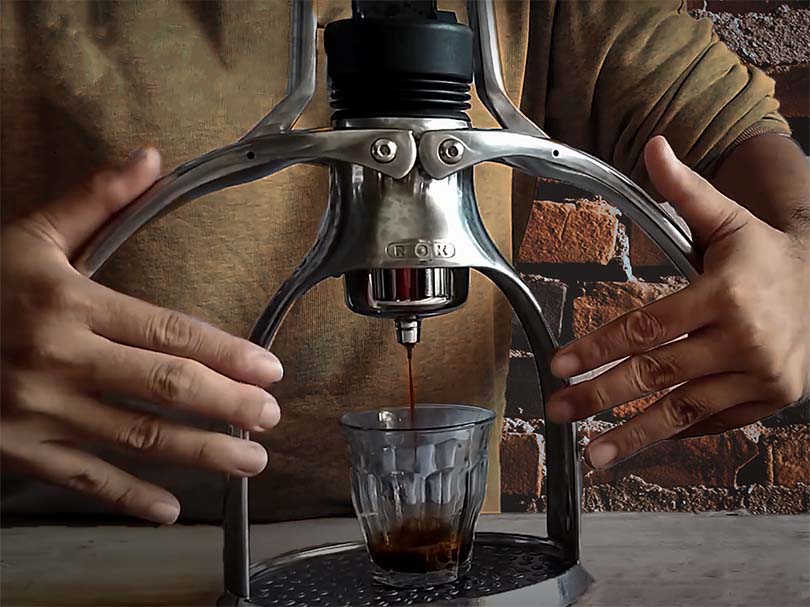
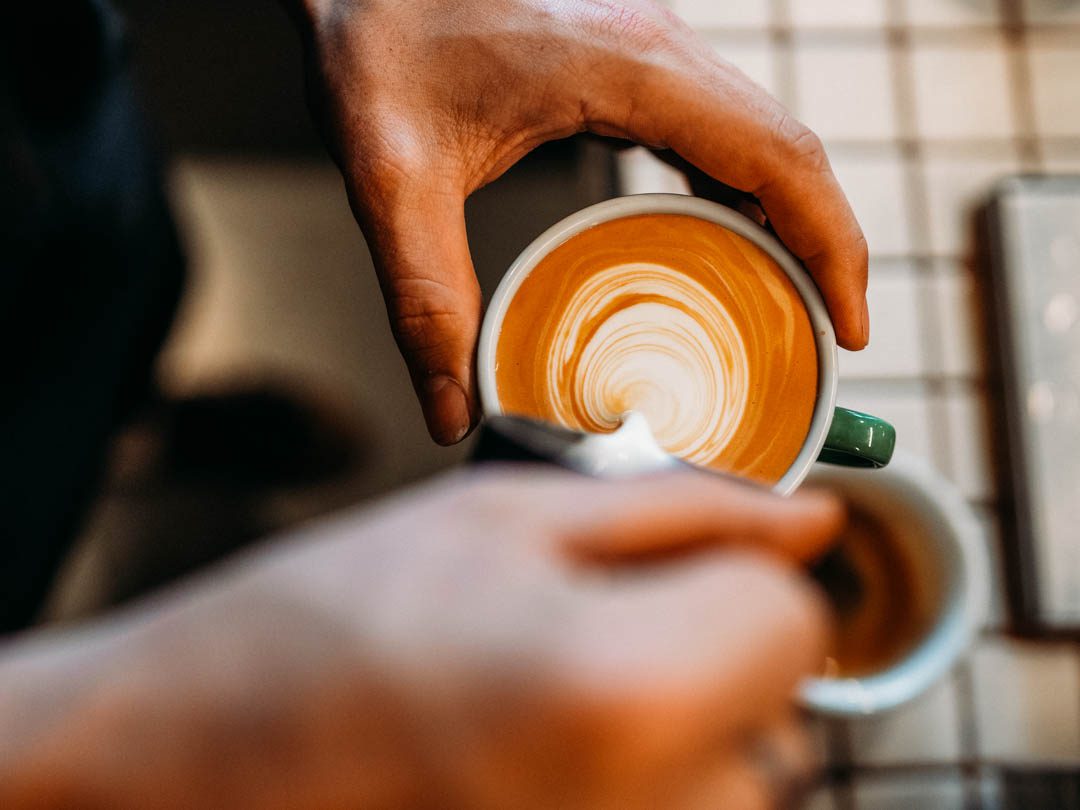
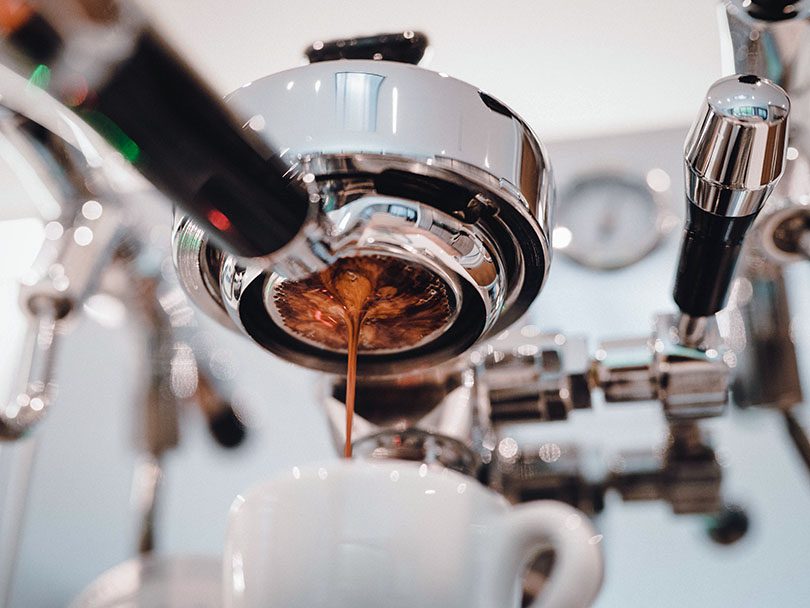
Don’t let high price tags suck you in. More expensive does not always mean better.
Yes, espresso machines in the budget market can absolutely make good espresso. Some may be good rather than great, it all just depends on what you’re looking for.
Have a look through our full reviews when you’re buying as we personally test all the machines and never sugarcoat the coffee quality in our reviews. Whilst it’s unlikely you will find a ‘perfect’ machine with every bell and whistle you want, you will definitely find one that makes a great quality espresso.
You just need to know what your priorities are, and where you’re willing to compromise.
With so many different types of coffee makers available, it can be difficult to know if you are looking in the right place.
The best type of coffee maker for you, all depends on your tastes and needs.
Even within espresso machines, there are different types: manual, semi-automatic, automatic, and super-automatic.
Broadly speaking, espresso machines use high pressure to brew the coffee. And not just any coffee, specifically an espresso i.e. a short, richer, full-bodied shot of coffee. If that’s not what you’re after, then you might need to look at one of the other coffee brewing methods.
From the most amount of control to the least, you can choose between a manual, semi-automatic, automatic, super-automatic, and single-serve espresso machine.
Manual Espresso Machine: For the purists who want to customize every part of the espresso brewing process. These machines give you total control over all the elements, including creating the pressure yourself. So, they are difficult to learn how to use but reward you with an espresso perfect for you.
Semi-Automatic Espresso Machine:
They take over the pressure building process, you just control the start and stop point, usually with a button. It is this type of espresso maker that gets you the best value at the $200 price point.
Automatic Espresso Machine: Similar to semi-automatics but automatic machines will stop the shot for you after a set length of time for, what it believes to be, the optimal espresso shot.
Super-Automatic Espresso Machine: The fancypants machines you see in the likes of Starbucks. So you won’t find a machine like this in the budget market. They are bean-to-cup, auto-frothing, easy-button pressing machines. In other words, at the touch of a button, it does everything for you.
Single-Serve Machines: Work at just the press of the button but use pods or capsules so you don’t need a grinder. But you are often tied to a brand.
Having read our reviews of the cream of the crop when it comes to the best espresso machines under $200, we hope you’ve found the perfect machine for you.
Just sneaking its way into the top pick for us is the DeLonghi Stilosa. Whilst it’s not perfect, this semi-automatic espresso maker produces a high-standard espresso shot. And, once you’ve mastered milk frothing, you’ll be showing off with professional barista-style results.
For life on the road, the Wacaco Picopresso is hard to beat. The high level of pressure in the hand-pumped device gives you the flexibility to have great espresso no matter where your life takes you.
Though there’s the potential for even better quality from the Flair Classic.
Or, if you want your morning to run as easily as possible, you can’t go wrong with the Nespresso VertuoPlus. Even the sleepiest of mornings can handle popping in a pod and pressing a button for a delicious cup of black gold.
One thing is for sure though: buying an espresso machine (no matter your budget) is a personal choice. So pick the one that best suits your needs.
You Might Also Like
-
Philips 3200 LatteGo Review: Is Simplicity the Best Coffee?
Built to be easy to use and clean. For an easy life, read our Philips 3200 LatteGo review to see if this is the espresso machine for you
-
Jura J8 vs Z10:
Sweet Milk Foam, Cold Brew, Or Great Espresso?Not sure whether sweet milk foam or cold brew coffee is right for you? We’ve tested and compared the Jura J8 vs Z10 to help you choose
